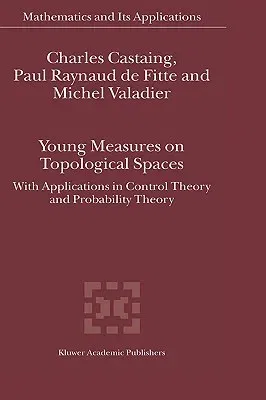Charles Castaing
(Author)Young Measures on Topological Spaces: With Applications in Control Theory and Probability Theory (2004)Hardcover - 2004, 14 July 2004

Qty
1
Turbo
Ships in 2 - 3 days
In Stock
Free Delivery
Cash on Delivery
15 Days
Free Returns
Secure Checkout

Part of Series
Mathematics and Its Applications
Part of Series
Mathematics and Its Applications (Closed)
Print Length
320 pages
Language
English
Publisher
Springer
Date Published
14 Jul 2004
ISBN-10
1402019637
ISBN-13
9781402019630
Description
Product Details
Book Edition:
2004
Book Format:
Hardcover
Country of Origin:
US
Date Published:
14 July 2004
Dimensions:
23.88 x
16.26 x
2.03 cm
ISBN-10:
1402019637
ISBN-13:
9781402019630
Language:
English
Location:
Dordrecht
Pages:
320
Publisher:
Weight:
725.75 gm